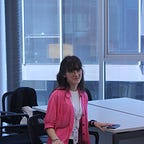Holographic Displays Transforming Visual Technology
In the ever-evolving landscape of technology, holographic displays stand out as one of the most mesmerizing and promising advancements. The concept of projecting three-dimensional images without the need for special glasses has captured the imagination of scientists, innovators, and science fiction enthusiasts alike. Holographic displays are not just the stuff of Hollywood dreams; they are rapidly becoming a reality that could revolutionize how we interact with visual content.
The Evolution of Display Technology
Before we dive into the wonders of holographic displays, let’s take a brief look at the evolution of display technology. From cathode-ray tube (CRT) televisions to flat-panel LED screens, the quest for better, more immersive visuals has been relentless. With each iteration, we have witnessed a leap forward in clarity, color accuracy, and size. However, the fundamental limitation of two-dimensional displays remained — until now.
What Are Holographic Displays?
Holographic displays promise to break free from the confines of flat screens, offering a truly immersive and three-dimensional visual experience. Unlike traditional displays that project flat images, holographic displays use light diffraction to create the illusion of depth, enabling viewers to see objects as if they were right in front of them. This technology is reminiscent of the holograms seen in science fiction movies, but it’s no longer confined to the realm of fiction.
How Holographic Displays Work
Holographic displays utilize complex optical systems and algorithms to create the illusion of three-dimensional objects in space. Here’s a simplified explanation of how they work:
- Light Source: Holographic displays require a light source, often lasers or LED arrays, to project light waves.
- Interference Patterns: These light waves are manipulated to create interference patterns, where waves overlap and interact with each other.
- Recording and Playback: The interference patterns are recorded and stored as digital holograms, which can then be played back by the display.
- Reconstruction: When the hologram is displayed, the light waves interact with the interference patterns, reconstructing the three-dimensional image that appears to float in space.
Applications of Holographic Displays
The potential applications of holographic displays are vast and varied:
- Entertainment: Imagine watching movies or playing video games with lifelike 3D characters and environments in your living room.
- Medical Imaging: Surgeons could use holographic displays for detailed 3D views of patient anatomy during procedures.
- Design and Engineering: Architects and engineers could use holographic displays to visualize complex structures in 3D.
- Education: Students could explore 3D models of historical artifacts, biological organisms, and more.
- Teleconferencing: Holographic displays could revolutionize remote communication, making virtual meetings feel more like face-to-face interactions.
Challenges and Future Prospects
While holographic displays hold great promise, they are not without challenges. Current technologies often require precise viewing angles and suffer from limited field-of-view. Additionally, the cost of producing high-quality holographic displays remains a barrier to widespread adoption.
However, ongoing research and development efforts are addressing these challenges. Innovations in materials, optics, and computational power are steadily improving holographic display technology, bringing us closer to the day when 3D holograms are a part of our daily lives.
To sum up, holographic displays represent a groundbreaking leap in visual technology, promising to usher in a new era of immersive and interactive experiences. While challenges remain, the potential applications across various industries are immense. As research and development continue, we can look forward to a future where the boundaries between the digital and physical worlds blur, and holograms become an integral part of our everyday lives. The future is indeed holographic, and it’s a future filled with wonder and endless possibilities.
~Büşra ESKİYURT
